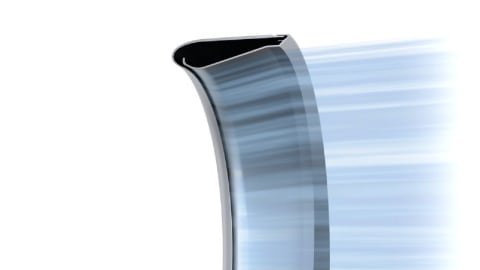S1E3: How do Bladeless Fans work?
San Francisco has become hotter, and it’s difficult to find apartments with air-conditioning. So when I recently moved to the city, I planned to purchase a tower fan for myself. And while browsing a store, I came across a Bladeless fan. I was curious to learn how it works…now I know, and so do you!
Concepts of Entrainment and the Coanda effect are crucial to fully understanding how bladeless fans work - I covered these in one of my newsletter issues here
Introduction
First things first….the bladeless fan has blades! But it’s hidden in the base of the fan and you can’t see it. A small motor (DC brushless) with a set of blades is mounted underneath, and the holes around the sides of the fan act as inlets for the surrounding air to be drawn in. When the device is turned on, the air is sucked in through these holes by the motor and is pushed into the circular ring on either side. It finally exits the fan through a narrow annular slit on the ring which we’ll explore next.
Figure 1 : Air intake of a bladeless fan. Source: johnlewis.com
Aircraft wing shape
The cross-section of the circular ring has the shape of an aircraft wing. The air that enters the circular ring, exits through narrow slits on the thicker end of the ring as seen in Figure 3. So basically, it’s a slit of width 1mm-5mm present around the ring in a circular fashion.
The aircraft wing shape causes a low-pressure region when the air exits the slit due to Bernoulli’s principle (Fluid traveling at a high velocity has a low pressure on the same level). This further draws in more air from the surroundings due to pressure difference.
Figure 2: Cross section of the bladeless fan. Source: Gizmodo.com
Figure 3: Air exiting slits along the inner surface angled a little outwards
Coanda Effect and the ring curved outwards
The air that exits the narrow slit, travels clinging to the surface of the ring in a direction along its width which is angled outwards by 15 degrees as seen in Figure 3. This tendency of a fluid jet to cling to a convex surface is called the Coanda effect.
Due to this effect, air traveling at a high velocity and the surface angled outwards, the center of the ring is now a region of low pressure due to Bernoulli’s principle. But the air behind the fan is relatively at high pressure (atmosphere). This difference causes the air to flow through the center of the ring from behind the fan, resulting in more airflow.
Entrainment of air while exiting the ring
The air travels along the outwardly curved surface and exits the ring on its thinner side. While it exits in the end, it draws air from the surroundings. This is because, when the air exits at a high speed, it is of lower pressure compared to the ambient pressure surrounding it. Due to this pressure difference, more air is drawn in. The phenomenon is called entrainment.
Conclusion
These factors come into play and provide an increased flow that is 16 times more than what was drawn in, at a velocity of 3-4 m/s. While using a bladeless fan, you cannot hurt yourself as the blades are hidden, and it’s easier to clean. Contrarily, the airflow produced by regular fans is uneven and choppy due to the variations on the blade surface.
Thank you for taking the time to read my blog post. If you liked what you read, consider subscribing to my newsletter for exclusive content and understand how a gadget works in only 3 minutes, sent directly to your inbox every Wednesday. We'd love to have you as a part of our community. Also, if you found this post to be informative or enjoyable, please share this with your friends on social media. Thank you!



